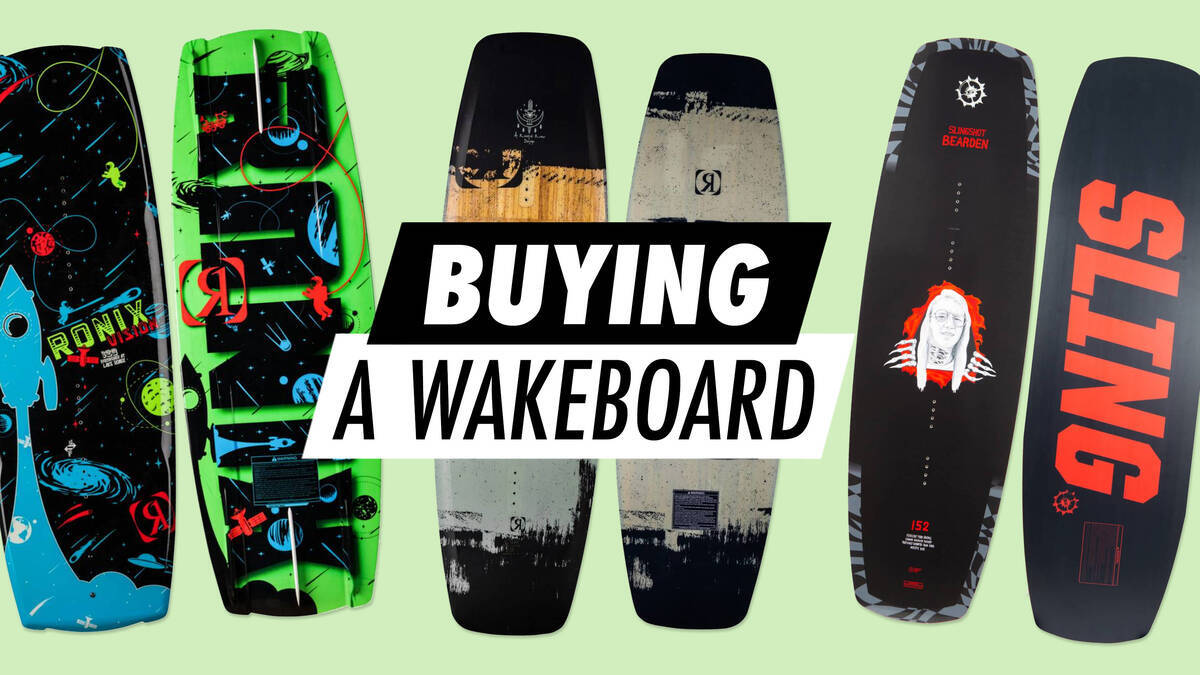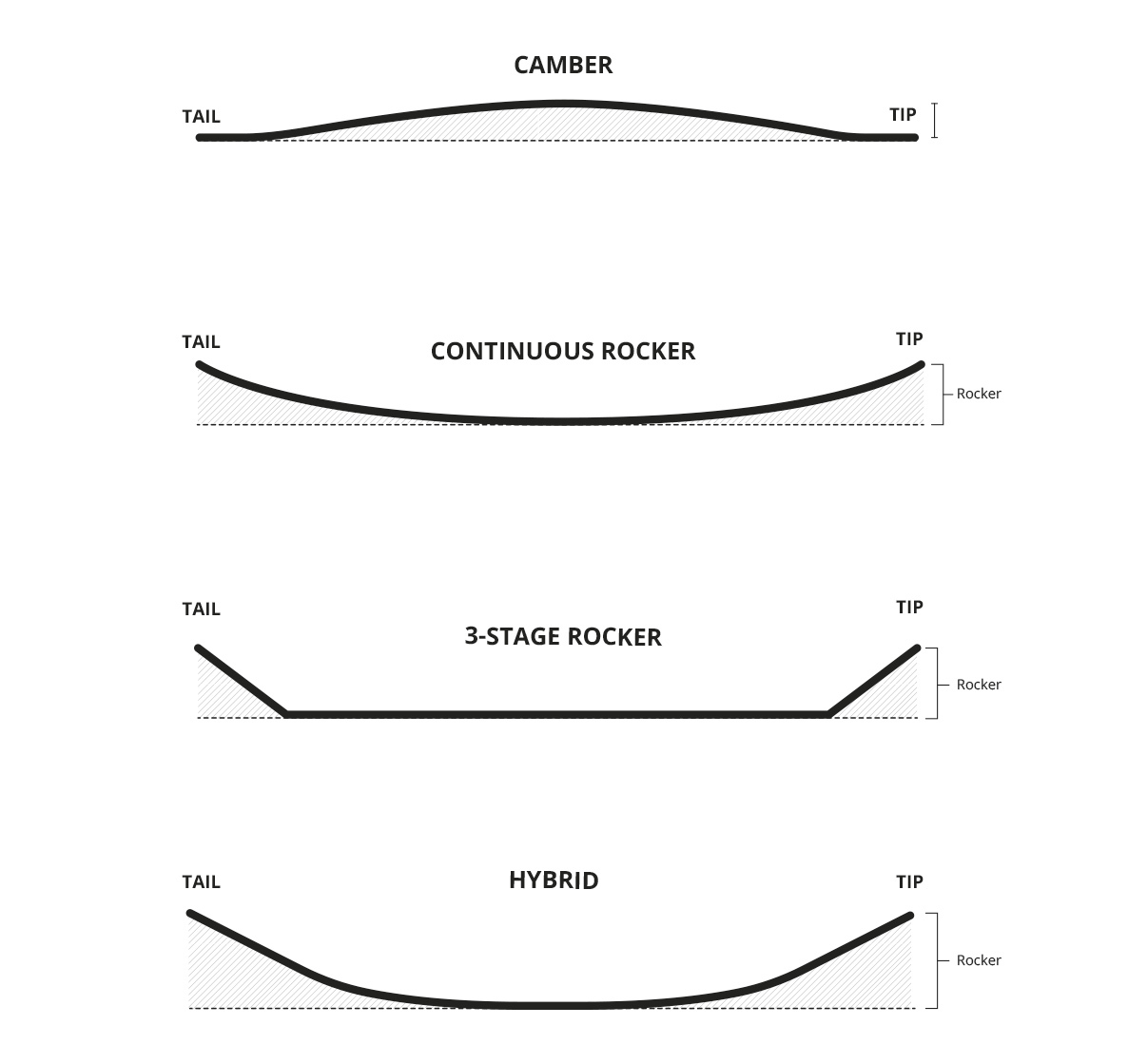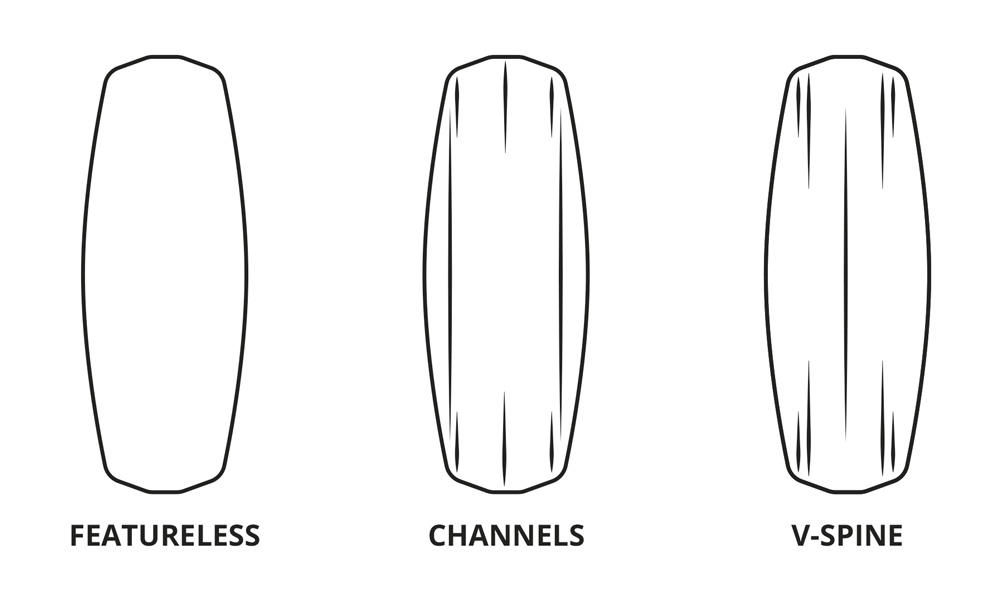Buying a wakeboard

Ready to wakeboard? Here is a quick and easy guide to what you need to keep in mind before buying your gear.
1. Type of wakeboarding and amount of flex
First and foremost, you should think of the kind of wakeboarding you are going to. There are two types of wakeboarding: Cable park and boat waking. The cable park wakeboarding speaks for itself - you are towed by an overhead cable (similar to drag lifts in ski resorts). Those boards have more flex, featureless bases, and removable (or none) fins. Boat wakeboarding means you are towed by a boat, and the wakeboards design for this type are stiffer (less flex), have features on the base to help you edge easier into the wake, and come with an array of fins.
You can also get a hybrid board which combines the features of both cable and boat wakeboarding - with medium flex (softer at the tip and tail, and stiffer between the bindings), simple base design, and removable fins.
2. Length
Probably the most important feature to consider is the length of your wakeboard. The length is determined by your own weight, and if multiple riders will be using the board, it is better to adapt the board to the heaviest rider. Underneath is a table with suggested wakeboard lengths depending on the weight, and also a quick note on sizing up/down.

Keep in mind that this is a general guide, so the size recommendations can differ from product to product.
So should you go for a slightly shorter or slightly longer board?
Getting a longer board, is a growing trend, among many riders (both beginners and advanced), and especially among cable parks riders. Going a size up makes riding the board easier, giving you a better boost off the wake. Bigger boards also give a softer landing, more speed, and more control when trying tricks for the first time (due to the larger area surface touching the water). They flex better, have bigger balance points when doing presses, and give more power for air-tricks.
Smaller boards are easier to maneuver, but slower and harder to push through the water (since less board surface area is in contact with the water). The landings on smaller boards are also harder and come with a bigger chance of digging in the nose of the board.
3. Rocker
Rocker is simply the curve (bend) profile of the board. There are two main types: continuous and 3-stage rocker. However, recently, there is a growing trend of cambered (similar to skis and snowboards curve profiles) and hybrid (a mix of continuous and 3-stage rocker) rocker boards.

- Continuous rocker gives a smooth, fluid curved shape. Boards with continuous rocker give smoother, faster ride, softer landings, and easy carving. This shape is often used for cable park riding;
- 3-stage rocker profile has three distinctive planes on the bottom of the board. This makes the board go higher when meeting the wake. However, this rocker also makes the board go a bit slower as it plows through the water rather than glide. Such rocker is more suitable for intermediate and advanced riders. This shape is often chosen for riding behind a boat.
- Camber rocker is a relatively new shape design. It distributes the rider's weight more equally, which automatically takes away some of the pressure off your back foot, since it stimulates a more natural posture. If you have ridden a continuous or 3-stage rocker so far, it may take some time to get used to a camber.
- Hybrid rockers are a blend of the first two types: a smoother, curve in the middle and more cut out tip and tail. This shape may come in handy both in the park or behind the boat.
4. Base shapes
Apart from the catchy design, the base of the wakeboard comes with various shapes which affect the ride of the board. There are three main base shapes - featureless, with channels, and with V-shape spine. Additionally, you can have concaves which are special dents, creating lift and acting as suction-reducing accelerators.

- Featureless base has no molded-in fins or channels; the ride is, therefore, affected by the overall shape, the rocker, and the fins;
- Channels on your board work as long, extruded fins which break the surface tension upon landing; they also help to direct the water flow.
- V-shape spines, similarly to the channels, soften the landings and make it easier to roll from one edge of the board to another (often added to 3-stage rocker boards).
5. Fins
There are two main types of fins: molded-in (permanent) and removable. Most of the beginner boards feature both of them. You can also ride finless (remove your fins), for example, in a cable park in order to get the most out of the obstacles and avoid catching a fin on one of them, while sliding.
Mainly, fins can be long and short, where longer fins give more stable and predictable ride (suitable for beginners), and shorter allow more freedom of movement and a looser feel on the water (intermediate and advanced riders).
6. Edges
Finally, looking at the edges, you should consider the style of riding you have or want to have.
Sharp edges are suitable for more aggressive riding, where deeper cuts are made into the water and the speed is higher. Round edges, on the contrary, are for more laid-back riders who want better sliding onto the surface and focus on surface tricks.
Variable edges mix the performance and feel of both sharp and round edges. This is possible by increased sharpness at the tip and tail (for more grip and cutting power) and rounder edges near the middle of the board (for more buttery feeling).
So to sum up, before you get your wakeboard you need to think of:
- The type of riding and amount of flex
- Length
- The rocker
- The base shapes
- The fins
- And the edges
And remember - always make sure to have fun in the water!
